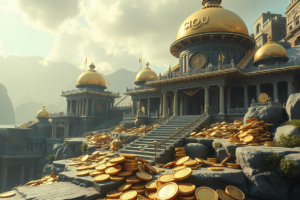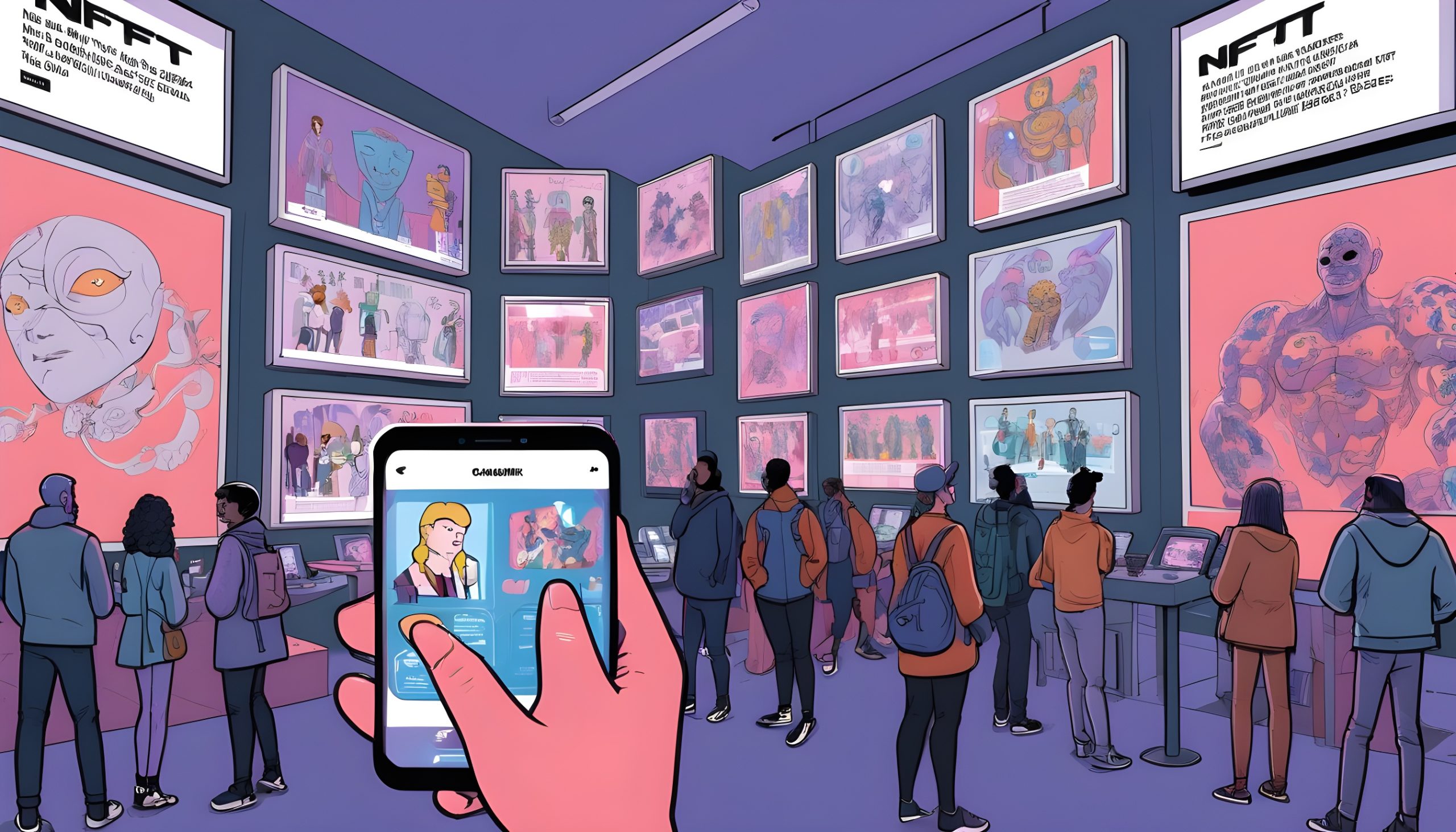Digital assets encompass a broad array of virtual goods owned online, ranging from images, videos, and music to in-game items. Unlike physical items, which are tangible, digital assets exist purely in the digital realm and can be easily copied and distributed, posing challenges in proving ownership and controlling their use. However, Non-Fungible Tokens (NFTs) offer a solution to this issue by serving as digital certificates of ownership for original digital files. By leveraging NFTs, individuals can authenticate their ownership of digital assets, thereby addressing concerns related to easy copying and ambiguous ownership in the digital space.
What are NFTs?
An NFT, or Non-Fungible Token, stands as a distinct digital asset representing ownership or authentication of a specific item or content, ranging from digital art, music, and videos to virtual real estate and collectibles. Unlike fungible cryptocurrencies such as Bitcoin or Ethereum, each NFT is unique and irreplaceable, granting rarity and value to collectors. These tokens are commonly stored in dedicated wallets and traded on blockchain networks, ensuring transparency and immutability in their ownership records.
Core Characteristics of NFTs
- Uniqueness: NFTs function as unique certificates for digital items, securely stored on a blockchain to authenticate ownership of the original, even when copies exist. For instance, owning an NFT could signify ownership of the genuine Mona Lisa painting, despite the presence of reproductions circulating on the internet.
- Verifiability: The ownership of an NFT is transparent and verifiable through a blockchain ledger. This means that anyone can confirm the ownership of a particular NFT by accessing the blockchain ledger. This feature provides assurance to buyers, sellers, and collectors regarding the authenticity of digital assets.
- Immutability: Once ownership of an NFT is recorded on a blockchain ledger, it cannot be altered. This means that the ownership record of an NFT remains immutable and cannot be modified, tampered with, or erased.
Examples of NFTs
- Digital artwork: Digital art, including paintings and illustrations, exemplifies the transformative impact of NFTs. In the digital realm, art can be replicated infinitely, blurring the lines of ownership. NFTs serve as certificates of authenticity, securely stored on a blockchain, providing irrefutable proof of ownership for the unique digital token representing the artwork. This innovation enables artists to monetize their work and receive recognition, while collectors can possess authenticated pieces that may appreciate in value over time.
- Collectibles: NFTs have the power to revolutionize collectibles, extending their reach into the digital realm. With NFTs, individuals can now own rare digital items such as trading cards or unique virtual sneakers. These tokens serve as digital certificates of ownership, providing indisputable evidence of possessing the original version of a collectible. This innovation fosters a market for valuable digital collectibles, mirroring the worth attributed to rare physical items.
- Music and videos: NFTs are disrupting the music and video industry by offering a new avenue for artists to release exclusive content directly to fans. Beyond traditional streaming or downloading, artists can now distribute exclusive content as NFTs, providing unique value to fans and collectors. These NFTs may include benefits such as access to concerts or exclusive content, enhancing the fan experience. By leveraging NFTs, creators can monetize their work in innovative ways and establish direct connections with their audience, potentially reshaping the landscape of the music and video industry.
- Event tickets and memberships: Event organizers have the opportunity to revolutionize ticketing systems by adopting NFT-based access, eliminating the need for paper tickets, and offering exclusive incentives. For instance, an NFT concert ticket could serve as a VIP pass, granting holders access to premium experiences, while a club membership NFT could unlock exclusive events and discounts for members.
Benefits of NFTs
For creators:
- Ownership and Control: NFTs enable creators to retain ownership and control over their digital creations. They can decide how their work is monetized, distributed, and licensed.
- Monetization: NFTs provide creators with new monetization opportunities. They can sell their digital artworks, collectibles, or other creations directly to buyers, bypassing traditional intermediaries and earning royalties from secondary sales.
- Global Reach: NFT marketplaces offer creators access to a global audience of potential buyers, allowing them to showcase their work to a broader and more diverse audience.
- Authenticity and Scarcity: NFTs provide a way to establish the authenticity and scarcity of digital assets. Each NFT is unique and verifiable on the blockchain, making it valuable to collectors and enthusiasts.
For collectors:
- Ownership and Authenticity: NFTs provide collectors with proof of ownership and authenticity for digital assets. Each NFT is unique and verifiable on the blockchain, ensuring that collectors own the original or a limited edition of a digital artwork, collectible, or other asset.
- Investment Opportunities: NFTs offer collectors new investment opportunities. They can purchase NFTs as speculative assets, hoping that their value will appreciate over time, or as part of a diversified investment portfolio.
- Global Access: NFT marketplaces give collectors access to a global selection of digital assets. They can discover and acquire artworks, collectibles, and other items from artists and creators around the world, without geographical limitations.
- Supporting Artists and Creators: By purchasing NFTs, collectors can support artists and creators directly, enabling them to earn income from their work and continue creating new content.
How do NFTs Work?
Blockchain technology serves as the foundation of NFTs, providing a decentralized and transparent system for recording ownership and transactions. Each NFT is represented by a unique token on the blockchain, containing metadata that verifies the authenticity and ownership of the associated digital asset. With blockchain’s immutability and transparency, NFTs enable creators to tokenize their digital creations, allowing collectors to purchase, trade, and own digital assets with confidence. The decentralized nature of blockchain ensures that ownership records are tamper-proof and publicly accessible, fostering trust and integrity within the NFT ecosystem.
The process of minting an NFT involves creating a unique digital token on a blockchain to represent a specific digital asset, such as artwork, music, or video. This typically begins by selecting a blockchain platform that supports NFT creation, such as Ethereum or Binance Smart Chain. The creator then uploads their digital asset to an NFT marketplace or platform and fills out relevant metadata, including the title, description, and any additional attributes. Once the metadata is set, the creator initiates the minting process, which involves generating a unique token on the blockchain that is linked to the digital asset. This token serves as a digital certificate of ownership, providing proof of authenticity and ownership for the associated digital asset. After minting, the NFT is typically listed for sale or auction on the marketplace, where collectors can purchase and trade it with cryptocurrency.
Potential Challenges of NFTs
Environmental impact of blockchain technology.
The environmental impact of blockchain technology, notably in NFTs, arises from the energy-intensive process of minting and trading, leading to concerns over carbon emissions and sustainability. Efforts to address this include developing energy-efficient protocols, promoting renewable energy use, and exploring alternative consensus mechanisms to reduce environmental harm.
Market volatility and uncertainty surrounding NFT value.
Market volatility and uncertainty surrounding NFT value pose challenges due to fluctuating prices influenced by speculation, trends, and the subjective nature of digital art. The lack of established pricing models adds to this uncertainty, making it difficult for stakeholders to assess the true worth of NFTs. Efforts to address these challenges include improved transparency, education, and the development of tools for informed decision-making in the NFT market.
Security risks associated with digital wallets and marketplaces.
Security risks associated with digital wallets and NFT marketplaces pose significant threats due to vulnerabilities such as hacking, phishing, and theft. Weak passwords and centralized storage make wallets susceptible to breaches, while marketplaces are targets for cyberattacks and fraud. To mitigate these risks, robust security measures like multi-factor authentication and decentralized storage are essential, alongside user education on safe practices.
The Future of NFTs
The potential applications of NFTs extend far beyond their current uses, encompassing a wide range of industries and scenarios. From digital art and collectibles to music, video, and event ticketing, NFTs offer innovative solutions for proving ownership, distributing exclusive content, and fostering direct connections between creators and consumers. Looking ahead, as blockchain technology continues to evolve and new use cases emerge, we can anticipate even more creative and impactful applications of NFTs across various sectors.
















